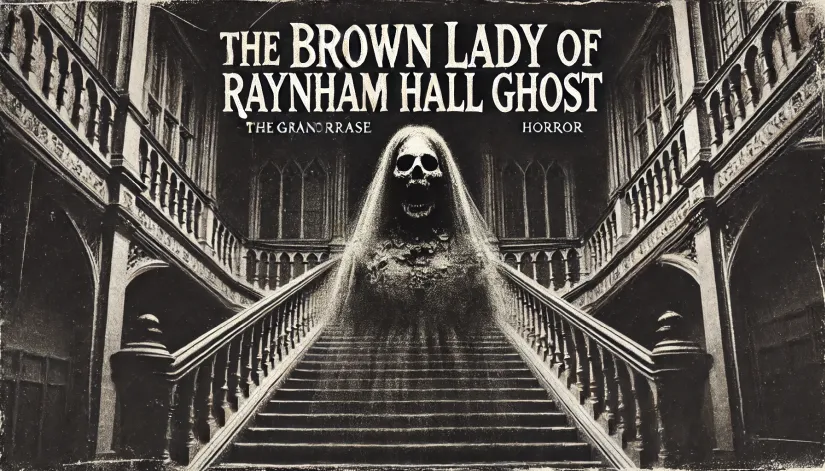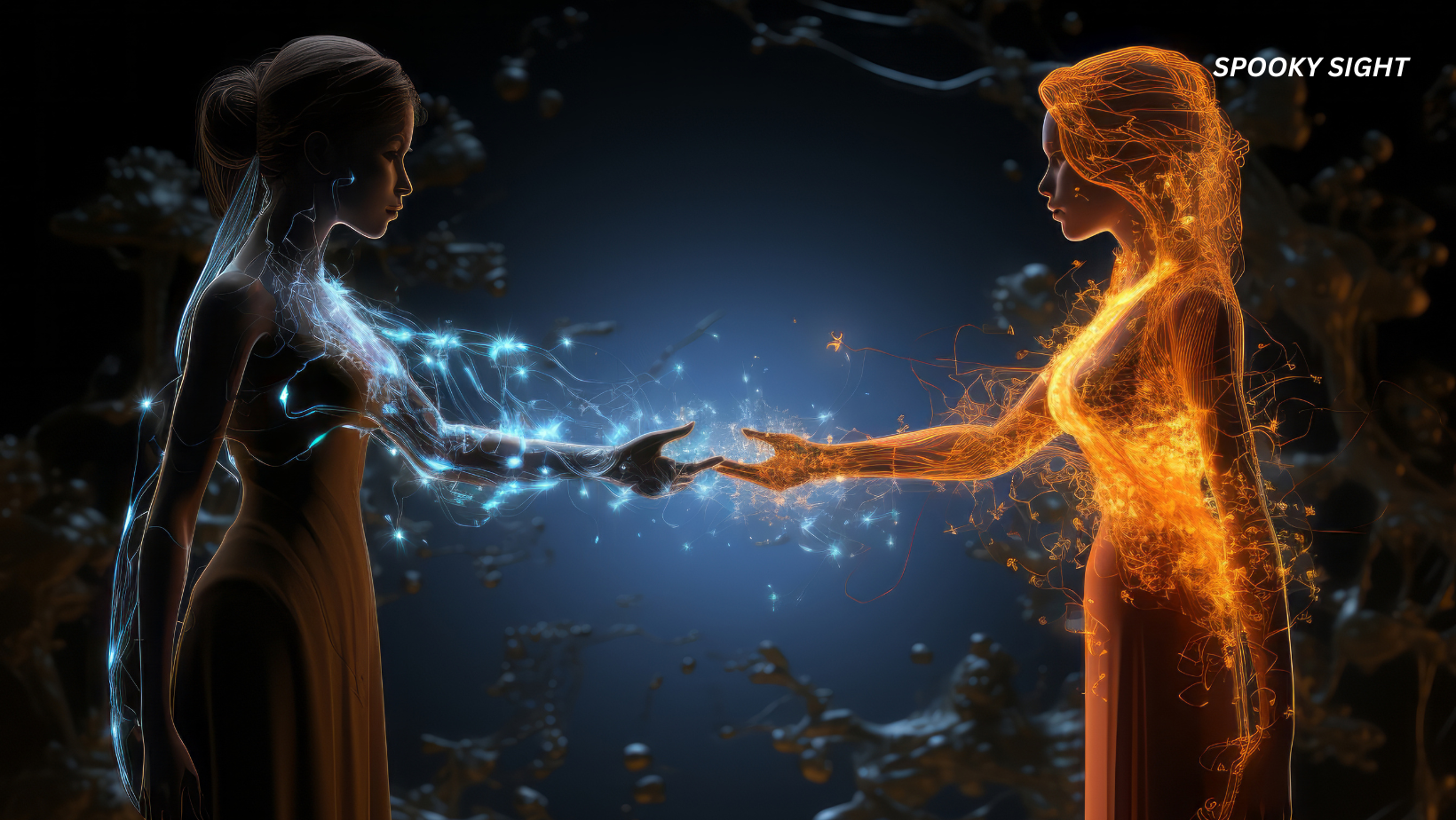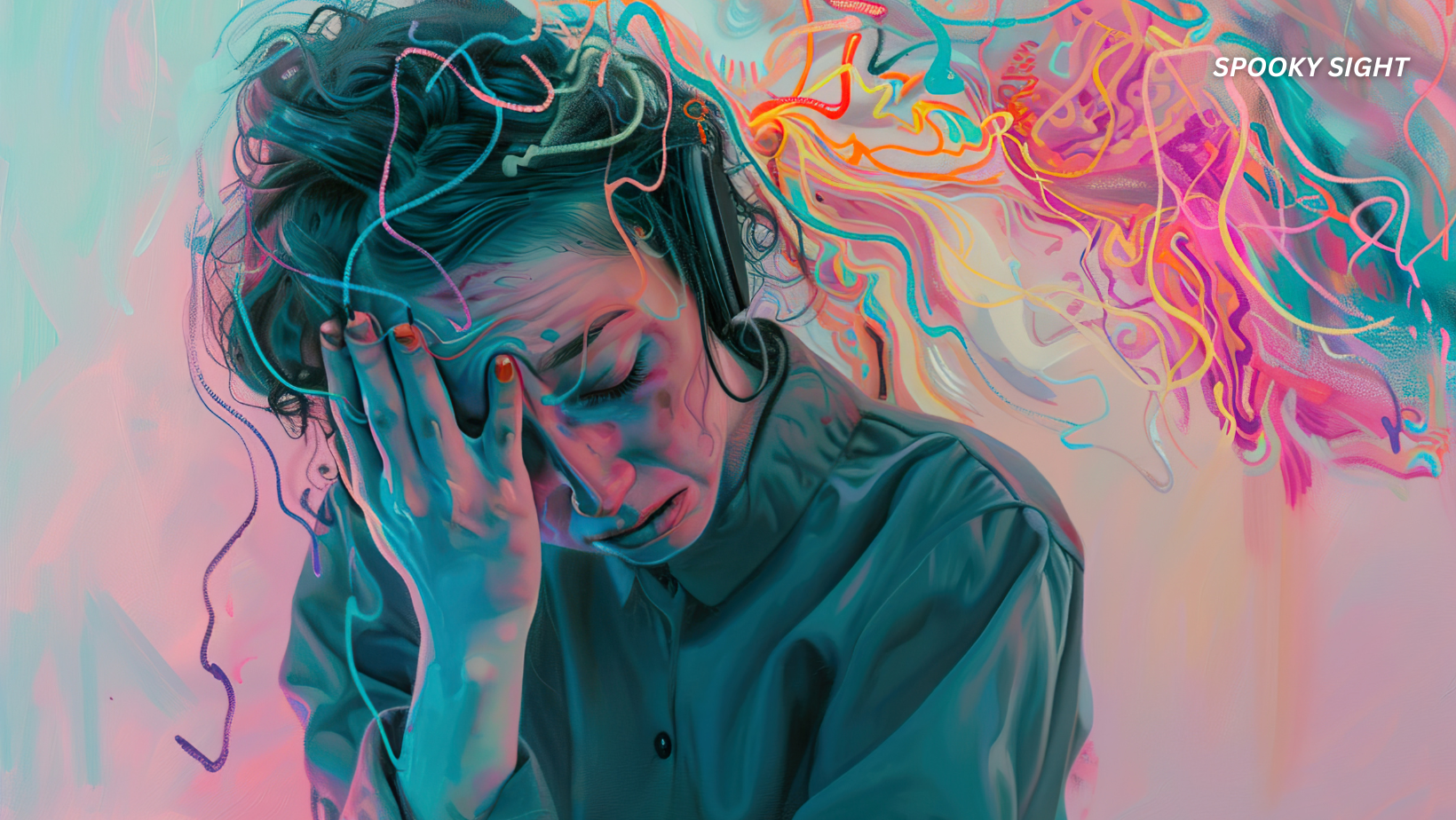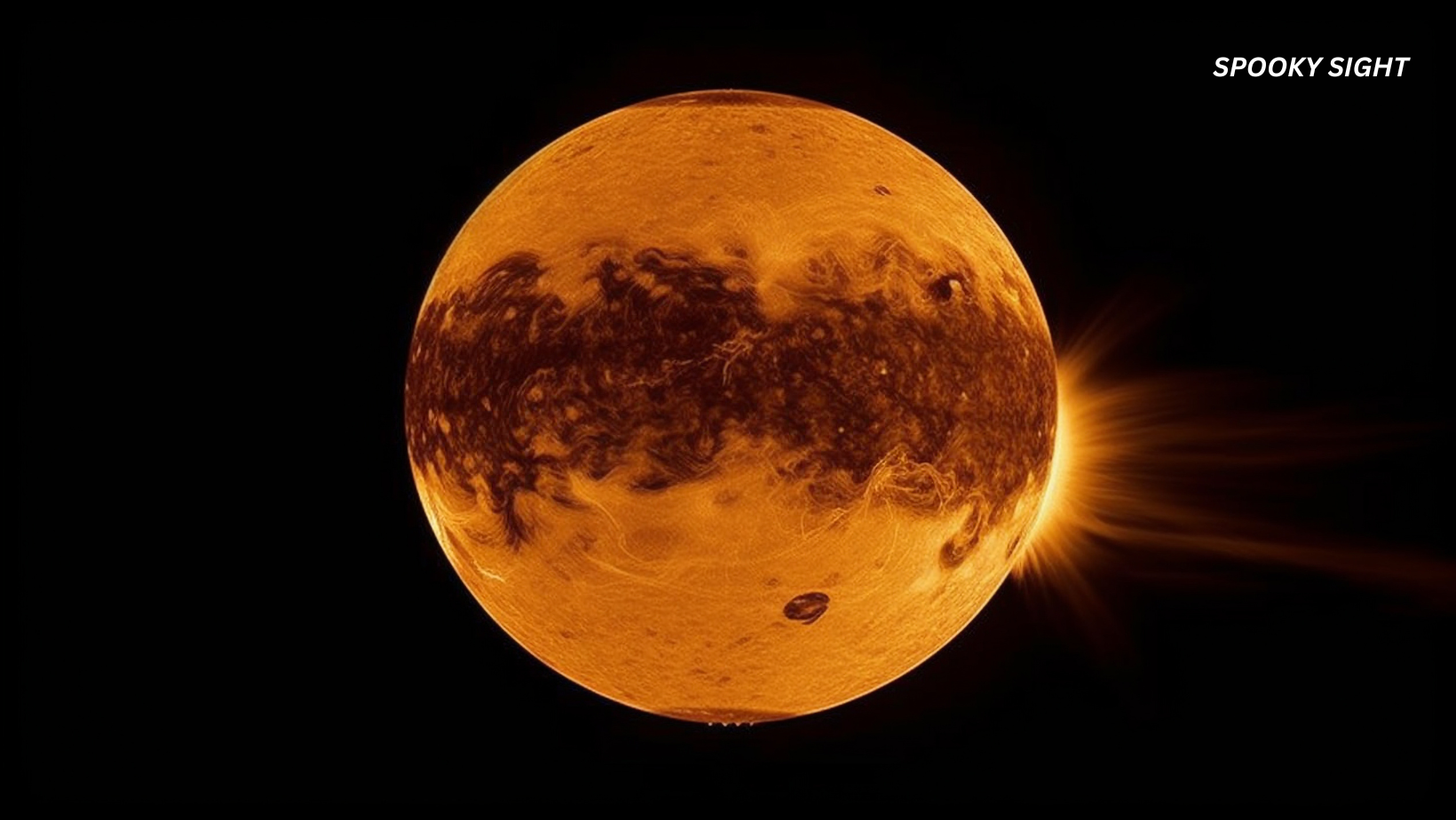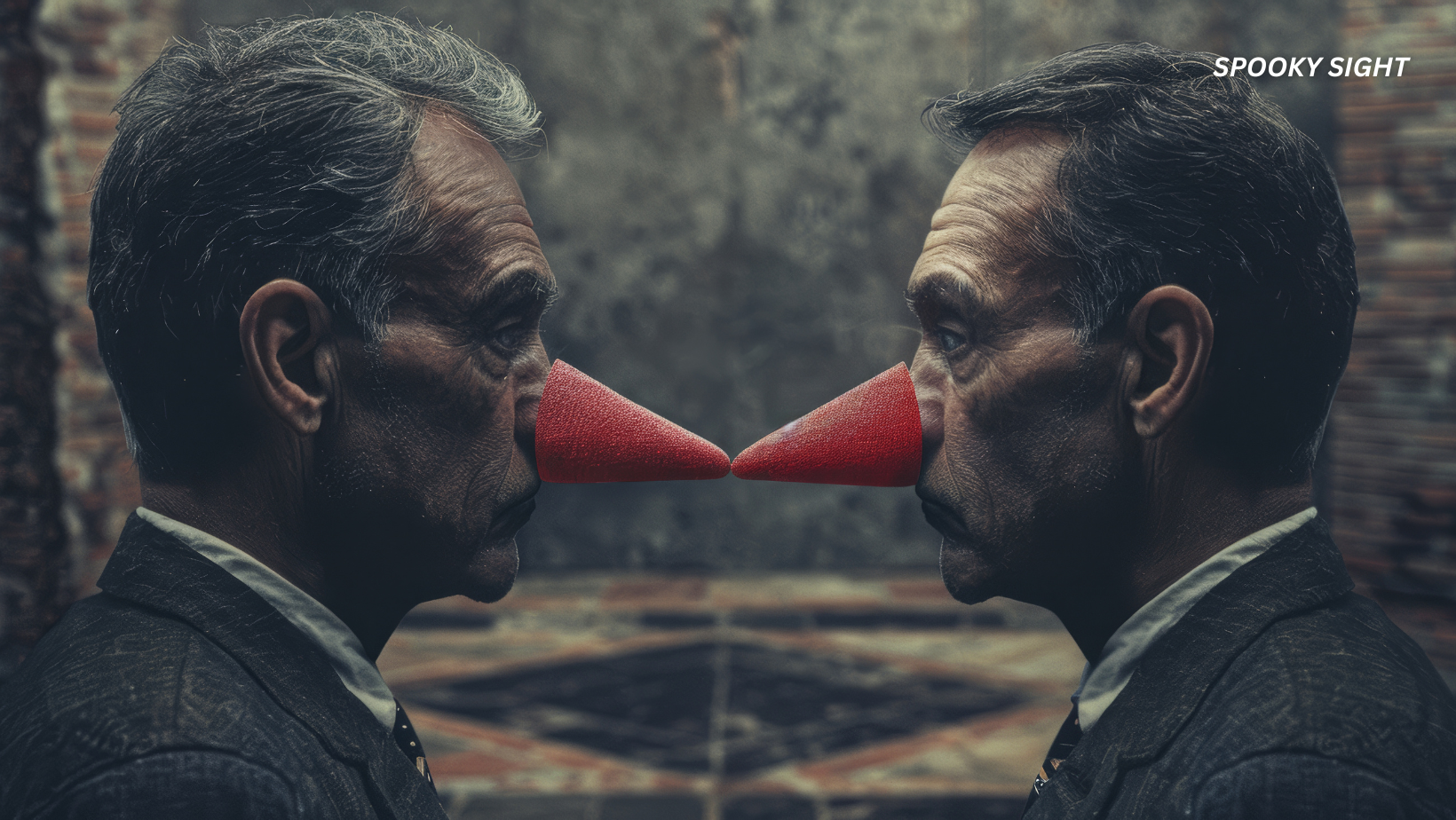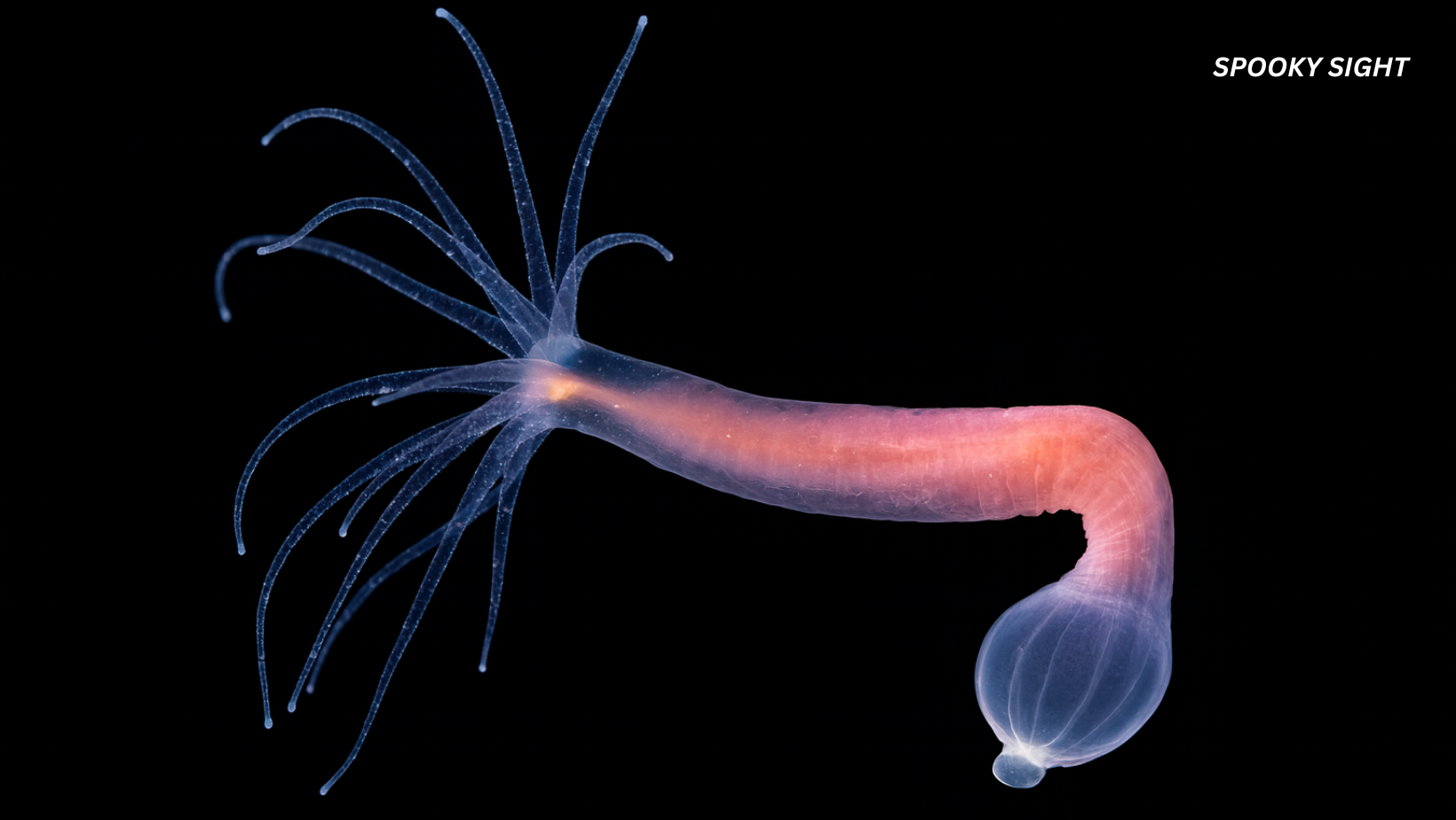In 1936, two photographers were stunned when their camera captured what seemed to be the ghost of a woman descending the grand staircase of Raynham Hall. Who is this ghostly figure? What tragic story keeps her spirit wandering these halls?
The Brown Lady of Raynham Hall has become one of England’s most iconic ghosts, but what’s the real story behind her fascinating legend?
In this article:
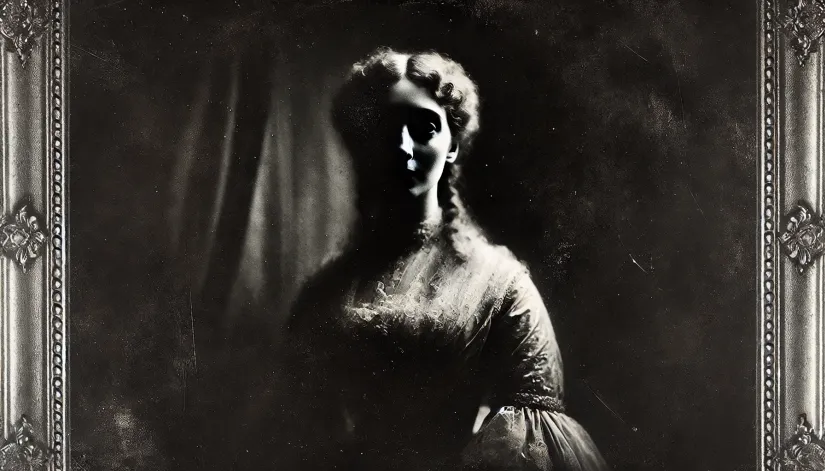
Who Is the Brown Lady of Raynham Hall?
The Brown Lady of Raynham Hall is allegedly the restless spirit of Lady Dorothy Walpole (1686–1726). She was the sister of Robert Walpole, who is generally regarded as the first Prime Minister of Great Britain.
Dorothy ended up marrying Charles Townshend, 2nd Viscount Townshend—a guy known for his violent temper. However, according to legend, Dorothy’s marriage was far from happy. On top of the violence she had to endure, her marriage was also plagued by allegations of infidelity, including a rumored affair with Lord Wharton.
And it wasn’t just her husband who supposedly trapped her in this unfortunate situation.
According to Mary Wortley Montagu (1689–1762)—English aristocrat, writer, and poet—it was actually the Countess of Wharton who orchestrated Dorothy’s downfall.
So, what exactly happened? Well, the story is a bit confusing. Dorothy and Charles Townshend lived together at Raynham Hall, the family estate. However, Dorothy was sometimes invited away to stay at other locations (including by friends or acquaintances). It was her way of escaping her abusive husband.
When the Countess of Wharton discovered her husband’s affair, she devised a revenge plan. She invited Dorothy back to Raynham Hall, knowing full well that Charles Townshend would never let her leave. Thinking her friend just wanted to talk, she agreed to the invitation.
However, once Dorothy returned to Raynham Hall, her husband Charles used this opportunity to confine her within the estate.
Related: Anne Boleyn’s Ghost: The Tragic Queen Who Never Left
Dorothy’s later years were filled with sorrow. She was locked in her rooms, deprived of her freedom, and cut off from her children—all as an act of vengeance by Charles.
Marchioness Gwladys Townshend, a later owner of Raynham Hall, described Dorothy as a charming but frivolous woman with a love for fine clothing. Family records even detail her spending on luxurious chiffons.
Yet, despite her lighthearted nature, Lady Dorothy was a devoted mother. The separation from her children might have been her deepest wound of all.
Dorothy died under mysterious circumstances in 1726. Some say she had been locked away and starved to death. But Marchioness Gwladys Townshend believed that was unlikely.
After all, Dorothy’s brother Robert Walpole lived just a few miles away at Houghton Hall, and he had the power to intervene. Instead, it seems more likely that Dorothy died of smallpox. A valid theory here is that she may have been confined to her rooms to prevent contagion rather than out of pure malice.
After her death, Lady Dorothy seemingly found no peace. Her spirit—discontented and bound by the injustices she suffered—is said to haunt Raynham Hall.
She became immortalized as the Brown Lady Raynham Hall—a ghostly figure forever wandering the halls. Maybe she searches for her children. Or, perhaps, she’s driven by the sorrow and betrayal she endured.
Either way, her story still lives on as one of the most famous and chilling ghost tales in English history. (And honestly, who wouldn’t want to find out what really happened behind those haunted walls?)
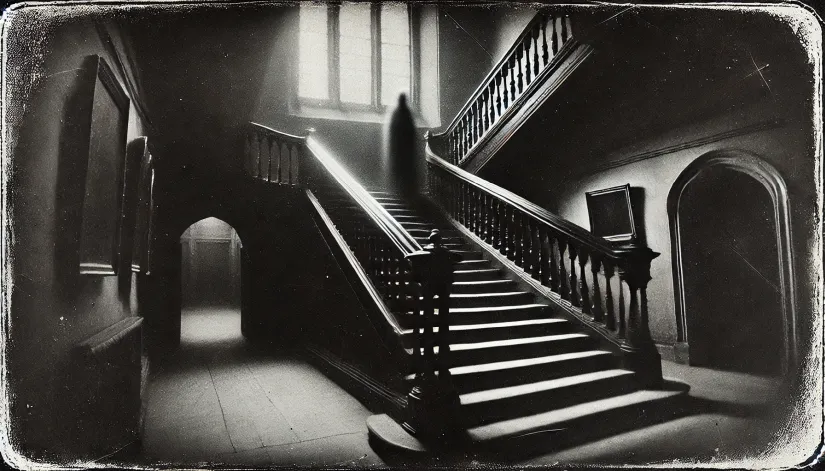
Brown Lady of Raynham Hall Sightings
The Brown Lady of Raynham Hall is most famously linked to the photograph taken on September 19, 1936, by Captain Hubert C. Provand and his assistant, Indre Shira. (More on that later!)
Major Loftus (Christmas 1835)
The first documented Brown Lady of Raynham Hall sighting goes back to Christmas 1835, as recounted by Lucia C. Stone. Who was she? Well, we don’t know much about her life. In fact, there are hardly any records at all. However, she’s recognized for her in-detail documentation of this first bizarre sighting.
Here’s what allegedly happened:
Charles Townshend invited several guests, including Major Loftus, during a festive gathering at Raynham Hall. Loftus (along with another guest named Hawkins) claimed they saw a woman in an old-fashioned brown dress while heading to their bedrooms.
Loftus described the ghost in detail, noting her old-fashioned attire. Thinking she was a real person, Loftus called out. But, just like that, the woman vanished without a trace.
Related: Mackenzie Poltergeist: Is Greyfriars the World’s Most Haunted Graveyard?
The following evening, Loftus positioned himself in a part of the corridor where he thought she might reappear. To his horror, he saw her once more. This time, she was a handsome woman in brown, but with empty, hollow eye sockets.
Loftus even sketched the apparition and shared it with the other guests. The sightings allegedly scared the household staff so much that many left their jobs immediately. They just couldn’t handle the haunting presence.
After these initial sightings, Lord Charles Townshend—who had also witnessed the Brown Lady of Raynham Hall—hired a team of detectives to investigate the supposed trickery. But even after several months, the detectives found nothing.
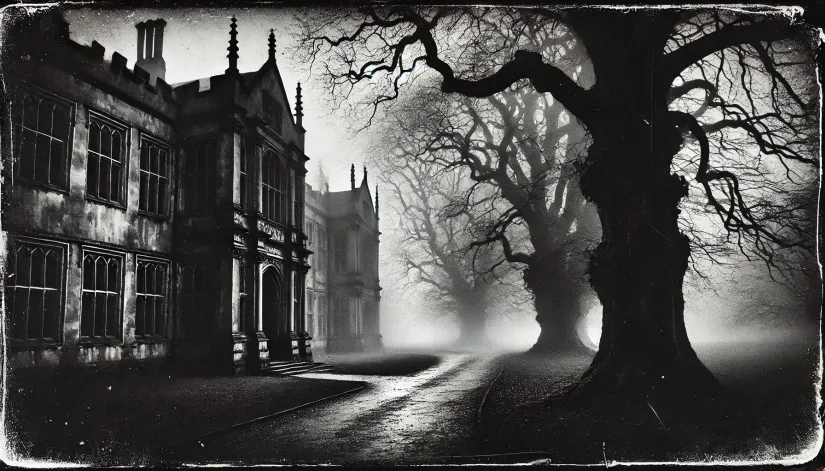
Captain Frederick Marryat (1836)
The next big Brown Lady of Raynham Hall sighting happened in 1836.
Captain Frederick Marryat, a close friend of novelist Charles Dickens, stayed at Raynham Hall. Marryat, a skeptic, wanted to disprove the ghost stories.
He took a loaded revolver and asked to sleep in the room with the large Brown Lady’s portrait. On the third night, while walking down the dark corridor with two of Lord Townshend’s nephews, they noticed the flicker of a lamp coming toward them. The young men thought it was one of the ladies of the house.
SpookySight recommends:
- Who Is the White Lady of Hohenzollern Castle?
- Who Is Resurrection Mary, Chicago’s Most Haunting Ghost?
- Stockwell Poltergeist: How One Servant Fooled Everyone
Marryat, feeling modest in just his shirt and trousers, stepped behind a door to avoid being seen. But as the figure got closer, Marryat realized it was no ordinary woman.
The ghost—resembling the portrait of Lady Dorothy Walpole—lifted the lamp to her face and grinned diabolically. Terrified by the grotesque sighting, Marryat fired his revolver.
However, the ghost vanished instantly, and the bullet lodged in the door panel opposite them.
Florence Marryat (1891)
In 1891, Florence Marryat—Captain Frederick Marryat’s daughter—recounted her father’s experience. She described the Brown Lady of Raynham Hall as the “perfect embodiment of sadness and terror.” A figure that left an indelible impression on anyone who saw her.
Florence also wrote that her father wasn’t the only one who saw the ghost. In fact, she claimed that many family members (including the children) swore they were visited by the Brown Lady of Raynham Hall. Kids especially were scared by the “mysterious lady” visiting their rooms at night.
George Townshend (1920s)
In yet another sighting during the 1920s, Lady Townshend’s son, George, and a friend, claimed they encountered the Brown Lady of Raynham Hall on the grand staircase.
They described her as looking exactly like the portrait of Lady Dorothy, but ghostly—so transparent that they could see the stairs through her form.
Gwladys, Dowager Marchioness Townshend, documented many of these sightings in her writings. She noted that the Brown Lady of Raynham Hall kept appearing, even as Raynham Hall faced tough times at the turn of the 20th century. In a way, the decline of the estate and the hauntings seemed intertwined.
Related: Do Residual Hauntings Fade Over Time? Why Some Ghosts Disappear
Gwladys took a considerable interest in the ghostly history of the manor, which led her to restore parts of Raynham and write about its legends in her book “True Ghost Stories.”
However, let’s not forget that, back then, spiritualism was at its peak among the upper classes. Many aristocratic women documented all sorts of alleged hauntings. Not to scare but rather as a way to preserve family history and connect with a fading era of grandeur.
Despite the drop in reported sightings after Marryat’s encounter, some believed the spirit of the Brown Lady shifted her haunting grounds to nearby locations like Houghton Hall and Sandringham House.
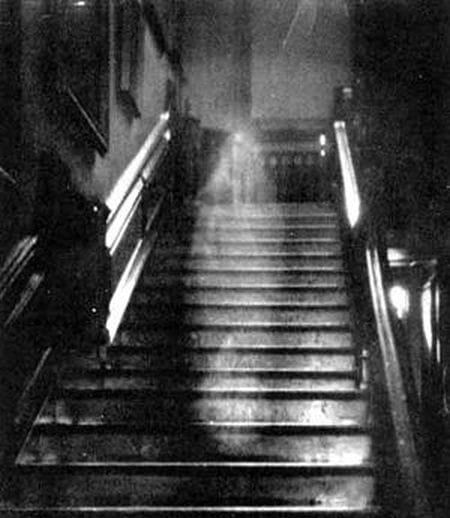
The 1936 Photograph: Debunked or Genuine Proof?
Now, let’s get back to the infamous 1936 photograph—widely known as the “ghost on the staircase photograph.”
The photograph taken by Hubert Provand and Indre Shira is still one of the most debated ghostly images ever captured. It was published in Country Life magazine on December 26, 1936, immediately grabbing worldwide attention.
The image shows a misty, ethereal figure seemingly descending the staircase of Raynham Hall. To many, it seemed like the ultimate proof of Lady Dorothy Walpole’s lingering spirit.
What Happened During the Photoshoot?
But what actually happened that night when the two photographs captured the iconic image? Well, according to their accounts, it was an entirely ordinary photoshoot—until it wasn’t.
Hubert Provand and Indre Shira were getting ready to take a standard shot of the grand staircase. Everything was set up as usual. Hubert was ready to take the shot when suddenly, Indre shouted in alarm.
She claimed to see a figure slowly coming down the stairs—a shadowy, unmistakably human form. Provand was shocked, too. However, he managed to snap the famous photograph just as the mysterious ghost reached the lower steps.
What developed on that glass plate would become one of the most famous ghost photographs ever taken. And, of course, Hubert and Indre insisted there was no staging, no trickery—just a chance occurrence that left them both stunned.
Excitement vs Skepticism
When it came out, the photograph caused a massive stir. Paranormal researchers (like Harry Price) were convinced it was genuine. Their argument? The excellent clarity and the unusual context in which it was taken.
Price himself even examined the photographic plate. Interestingly, he found no signs of double exposure or tampering. This evidence (or the lack of it) convinced him that the photograph was really tough to dismiss.
Let’s not forget that Price, known for his investigations into the Borley Rectory (“the most haunted house in England”) and his work with the medium Helen Duncan, was no stranger to ghostly encounters.
However, as expected, skeptics jumped in just as fast. Some pointed to inconsistencies, like the lighting angle that didn’t match the shadows in the rest of the photo.
Others found the positioning of the alleged ghost a bit suspicious. Could it have been just a trick of the light, a misinterpreted reflection, or maybe even a deliberate fabrication using early photographic techniques?
The answer is, “Yes, it could have been.” Photography experts at the time speculated that a long exposure might have led to an accidental “ghosting” effect—maybe someone moved during the shot without realizing it.
There were also claims that the image might have been staged using gauze or another translucent material to create the ghost. Honestly, this wasn’t far-fetched. Ghost photography was all the rage during the 1920s and 1930s. In fact, many photographers then tried to produce similar images—often for cash or fame.
But, according to Hubert and Indre, this was not the case. They claimed they were simply photographers in the right place at the right time.
Now, the lack of obvious physical manipulation in the glass plate is a major reason I think the photograph may be genuine. And let’s be honest here—every single paranormal enthusiast and ghost hunter out there WANTS this image to be real.
The idea that someone finally captured genuine proof of a spirit is like the holy grail for ghost hunters. If this photograph is real, then it changes everything.
Nobody, even now, has been able to definitively disprove the authenticity of this photograph. And that, in itself, speaks volumes. Could this be one of the few genuine evidence of a ghost? Well, guess we’ll never really know for sure.

Modern Paranormal Research and Recent Sightings
The Brown Lady of Raynham Hall ghost has continued to intrigue modern paranormal researchers. How so? Because her tragic story draws attention far beyond her initial sightings.
The 2022 Séance at Raynham Hall
On Halloween night—October 31, 2022—a group called the “Norfolk Paranormal Society” set up a séance at Raynham Hall, hoping to reach out to Lady Dorothy’s spirit.
This séance was led by John Harris, the group’s lead investigator, along with Sarah Thompson, a psychic medium. It all took place in the ballroom, with about ten attendees present, including some local community members.
And what happened next? Well, participants claimed they saw a shadow move across the room. Then, several attendees reported sudden drops in temperature—from about 68°F to 50°F—in just a few minutes. (If you know anything about paranormal activity, you know sudden temperature drops are often linked to paranormal manifestations.)
Sarah Thompson and one of the attendees allegedly heard a distinct voice that whispered, “They won’t let me go.” Another witness claimed to see a woman in a brown dress appearing briefly before fading away.
The story even got some brief coverage in the “Eastern Daily Press.”
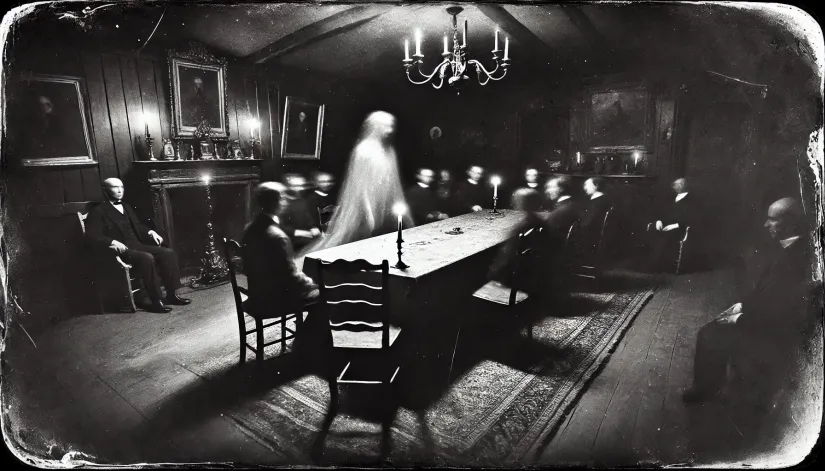
The Scole Experiment
But that’s not all. Perhaps the most exciting link to the Brown Lady’s haunting comes from the Scole Experiment (conducted between 1993 and 1998).
Widely recognized as one of the most well-documented paranormal investigations of the late 20th century, this experiment involved séances and spirit communication in a controlled setting in Scole, Norfolk. Robin Foy led the experiment with mediums Diana and Alan Bennett.
What does all this have to do with Brown Lady of Raynham Hall? Well, it turns out that during one of the first sessions, several mediums claimed to contact a spirit that matched Lady Dorothy Walpole’s description. They described an elegant woman in an old-fashioned brown dress, seemingly tied to a grand staircase.
Then, three years later, in 1996, the same spirit allegedly communicated that she was indeed Lady Dorothy, sharing specific details about her life at Raynham Hall. Interestingly, all these details were later verified through historical records.
The entire experiment was documented in the book “The Scole Experiment: Scientific Evidence for Life After Death” by Grant & Foy in 1999.

